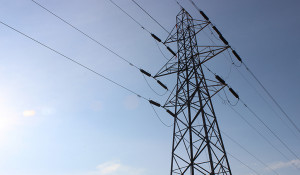15th March, 2022
The energy cap dominating the news at the moment will see millions of UK households automatically shifted onto a more expensive energy tariff if they don’t take action when their fixed tariff ends – and for the unlucky ones that aren’t on a fixed rate tariff – they can expect a hike in prices from the 1st April.
A staggering 20% of people are unsure of the difference between a standard variable tariff (SVT) and a fixed tariff. What’s more, more than 40% of energy users don’t know when their tariff ends.
If you don’t know when your tariff ends, you could end up paying much more when you’re moved onto a standard variable tariff (SVT).
Many people assume that being on a ‘fixed’ tariff means you’re unable to switch to another provider while others think it means you can only use a ‘fixed’ amount of energy during the tariff period.
In fact, fixed tariffs guarantee set unit prices throughout the duration of the energy tariff. Whereas standard variable tariffs means that you pay a variable price each month, dependent on a range of factors like fluctuations in the wholesale energy market.
As a result SVTs could prove to be more expensive than fixed tariffs.
If you do not know already, we recommend contacting your energy provider and find out when your fixed tariff will expire. It would then be a good idea to do some research to find if there are better deals available to you.
If you’re on a fixed rate deal, you should continue to pay the same amount each month even when the energy cap goes up in April, unless your provider goes bust.
If your contract is coming to an end or has ended and you are currently on the supplier’s SVT, then options are limited in terms of a fixing your rate. Martin Lewis recommends that ‘households are better off doing nothing’ due to the cheapest fix on offer right now being a whopping 56% (on average) more expensive than the current energy price cap.
However, there are a couple of ways in which you could save money:
Choosing to pay by direct debit, as you may be charged £130 extra per year if opting to pay via cash or cheque.
Installing a smart meter and/or thermostat will track how much energy you’re using so you can monitor costs and avoid unpleasant surprises in the form of unexpectedly large bills.
Controlling your heating - and only use energy when you need it - with a smart thermostat.
The government are also offering a £200 rebate loan in October to all households (this will need to be paid back from April 2023). A £150 council tax rebate in April to all households in England, Scotland and Wales for those in bands A to D. A £144 million discretionary fund for councils aimed at those on low incomes who don’t qualify for help due to their council tax band.
* By clicking this link, you will be redirected to away from our website.
* Please note that the above information has been gathered through secondary research. The information provided is not based on our opinion. You should seek further guidance and information before making an informed decision.

